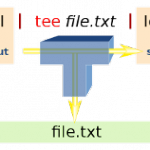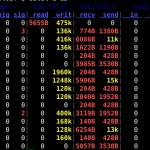The command “tee” it’s one of the basic commands that you should find in any system, yet it’s not so popular or use, this command reads standard input and writes it to both standard output and one or more files, effectively duplicating its input. It is primarily used in conjunction with pipes and filters. The […]
Run the same command on many Linux servers at once
Original article by Linux Brigade Ever have to check a list of Linux servers for various things like what version of CentOS they’re running, maybe how long each has been running to get an uptime report? You can and it’s very easy to get going with it with the command gsh Group Shell (also called […]
Linux Subnet Calculator (CIDR)
Article based on the original work of Travis Zajkowski first posted on his blog As first thing, this is a good definition of subner, from wikipedia: A subnetwork, or subnet, is a logically visible subdivision of an IP network. The practice of dividing a network into two or more networks is called subnetting. All computers that belong to a subnet […]
Linux Terminal: Dstat monitoring tools
Dstat is a versatile replacement for vmstat, iostat, netstat and ifstat. Dstat overcomes some of their limitations and adds some extra features, more counters and flexibility. Dstat is handy for monitoring systems during performance tuning tests, benchmarks or troubleshooting. Dstat allows you to view all of your system resources in real-time, you can eg. compare […]
How to access Google Drive on Linux
For what I know there isn’t an official google drive application for Linux and so after looking around I’ve found that there are some interesting project that you can use to access your data on Google Drive from your linux, and in particular today I’d like to show 2 of them: Grive and Grive Tools: […]


